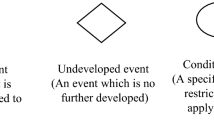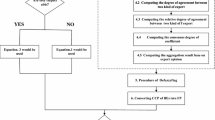Abstract
In general, a power plant (nuclear, thermal, chemical etc.) consists of operating and emergency safety systems. These systems vary from very complex to simple systems. A system normally consists of active components and passive components. The failure of any operating system will lead to a change in the state of the plant. The availability of the plant depends on the successful operation of the operating systems and the operation of the components in the systems. In order to ensure the availability of the plant reliability of the systems/components should be ensured. In recent years most of the advanced nuclear reactors implement passive systems, aimed at improved safety and availability. In the traditional reliability analysis of passive systems the failure probability is estimated based on the actual components present in the system and their corresponding failure data information. However, the passive system may fail to fulfill its mission not only because of a consequence of classical mechanical failure of component (passive or active) of the passive system, but also due to the deviation from expected behavior due to physical phenomena mainly related to thermal hydraulic (called as virtual component, VC). Hence, one should consider the failure probability of the VC in the analysis. In this paper a methodology for performing passive system reliability, which combines the actual component failures and the failure of VC, has been proposed based on fuzzy fault tree approach. This methodology will eliminate the simulation based approach that is being adopted in the present day passive system reliability analysis. The methodology has been demonstrated with a case study on passive decay heat removal system of a typical nuclear power plant.









Similar content being viewed by others
References
Bianchi F, Burgazzi L (2001) Evaluation of the reliability of a passive system. International conference nuclear energy in Central Europe, 10–13 Sept 2001
Durga Rao K, Gopika V, Hari Prasad M, Kushwaha HS (2004) Uncertainty analysis of safety systems of nuclear power plant by fuzzy set theory. International conference on probabilistic safety assessment and management, Berlin, Germany, 14–19 June 2004, pp 2283–2288
Hari Prasad M, Gaikwad AJ, Srividya A, Verma AK (2011) Failure probability evaluation of passive system by using fuzzy Monte Carlo simulation. Nucl Eng Des 241:1864–1872
Jafari J, Auria FD (2003) Reliability evaluation of a natural circulation system. Nucl Eng Des 224:79–104
Marques M, Pignatel JF (2005) Methodology for the reliability evaluation of a passive system and its integration into a Probabilistic Safety Assessment. Nucl Eng Des 235:2612–2631
Zadeh LA (1965) Fuzzy sets. Infect Control 8(3):338–353
Zadeh LA (1973) Outline of a new approach to the analysis of complex systems and decision processes. IEEE Trans Syst Man Cybern 3(1):28–44
Author information
Authors and Affiliations
Corresponding author
Appendix
Appendix
1.1 Probability ↔ possibility transformations
Consider a random variable X which follows normal distribution with mean and standard deviation as μ and σ respectively. The density function of the variable is given as
CDF of X can be given as:
In the fuzzy membership function the maximum membership value is 1. For the normal distribution f max will occur at mean value. Hence, the fuzzy membership function for the normal distribution can be given as follows:
In general, for any distribution one can divide the range of the parameter into very small intervals and one can find the probability of occurrence of the parameter in each interval as follows:
Find the ΔFmax from the above information. Now membership function for each interval can be written as follows:
In the above expression C is a constant depends on the distribution. The above expression can be used to transform possibility to probability distribution as follows:
Rights and permissions
About this article
Cite this article
Hari Prasad, M., Rami Reddy, G., Srividya, A. et al. Reliability estimation of passive systems using fuzzy fault tree approach. Int J Syst Assur Eng Manag 3, 237–245 (2012). https://doi.org/10.1007/s13198-012-0094-9
Received:
Revised:
Published:
Issue Date:
DOI: https://doi.org/10.1007/s13198-012-0094-9




